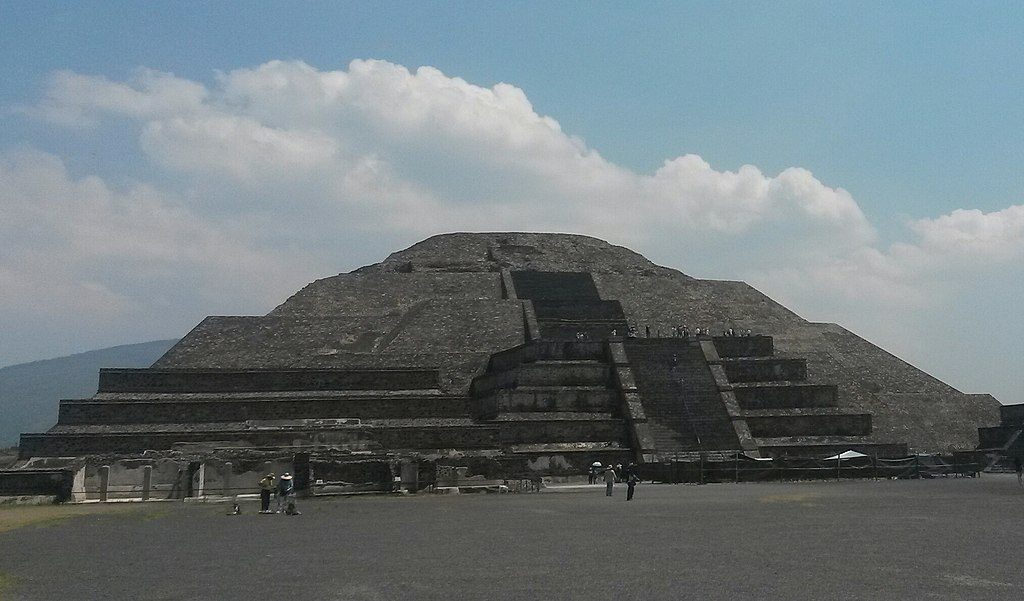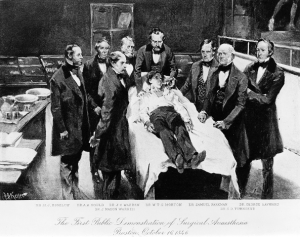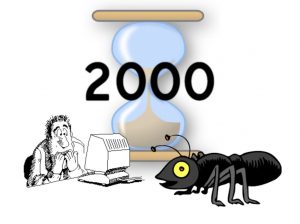At the heart of the mighty Aztec empire laid the capital Tenochtitlan, the Venice of the new world. No other civilization at the time could hope to compare to the city’s impressive pyramids, glamorous temples, and advanced aqueducts. At one point in history, Tenochtitlan was so populous that it contained around 200,000 inhabitants. But Tenochtitlan wasn’t always such a powerful urban site. When the Aztecs were immigrants looking for a new home, they were captivated by a mysterious ancient city. To this day, no one really knows who built it or what happened to its inhabitants. But to the Aztecs, they believed that out of this city emerged the whole of human society and order. This once glorious city was known as Teotihuacán.

There is only a minuscule amount of knowledge about Teotihuacán because a sufficient written record of the city does not exist. In fact, no one knows what the people of Teotihuacán called themselves or what the actual name of the city was. Indeed, it wasn’t until much later that the Aztecs named it Teotihuacán, which means “city of the gods.”1 To an extent, the Aztecs were not exaggerating, because Teotihuacán was once an electrifying center for religion, trade, and culture. At one point, the city contained over 2,000 apartment buildings, 600 pyramids, around 500 workshops, and countless temples, plazas, and palaces.2 But how, exactly, did Teotihuacán become such a powerful metropolis? Once again, let us look at what the Aztecs themselves have to say about it.
According to an Aztec legend, the world was created and destroyed four times before the creation of our current world. Each time the world was destroyed, the sun quickly perished alongside it, and a new sun, presided by a god, was required to create another world.3 The first world was under the dominion of Tezcatlipoca–the god of the night. During his era as the sun, there were no humans, but rather a race of vegetarian giants that roamed the Earth. Tezcatlipoca’s reign lasted for 676 years, but it was cut short when Quetzalcoatl, the god of the wind, grew displeased as he saw the other deity ruling above the land. So he used his staff to knock down Tezcatlipoca into the seas at the farthest corners of the earth. Angered by this, Tezcatlipoca gathered his strength and emerged from the water as a powerful jaguar, running through the Mesoamerican plains and mountains. Soon, many jaguars appeared alongside him, and they eventually hunted and killed every giant on Earth–thus bringing an end to the first world.4
Quetzalcoatl then presided over the second world and, under his rule, human-like beings began to appear. His reign was only 364 years long, however, for Tezcatlipoca wanted revenge on his cosmic rival. Using his dark powers to overwhelm the wind god, he launched a massive hurricane that swept away the sun and the people. Darkness then covered the world and the survivors hid in the trees, eventually turning into monkeys.5

Tlaloc, the rain god, found opportunity in the darkness, and quickly took charge over the new third world. Much to Tlaloc’s dismay, Quetzalcoatl was displeased with his rule, and he sent a rain of fire that again destroyed the sun and earth. The survivors who hid from the fire became the ancestors of the dogs, turkeys, and butterflies of today. The goddess of the lakes and oceans, known as Chalchiúhtlicue, then presided over the fourth sun and world. Although her reign lasted much longer than the previous two, tragedy was no stranger to the gods. Although no one knows exactly how the fourth world ended, Aztec accounts seem to tell the story of a great flood covering the Earth, turning the inhabitants of that world into fish, whales, and other creatures of the deep ocean.6
After some time, all the gods gathered at Teotihuacán. The earth was filled with darkness and a new sun was needed. The gods also decided that a moon should provide light when the sun did not. The rich god Tecuciztécatl proudly stepped forth to be the new sun. But a small, humbler god, Nanahuatzin also volunteered. After agreeing to share the Earth, the two made preparations to renew the world.7 For four days, Tecuciztécatl and Nanahuatzin prayed and fasted.8 When they finished, the other gods lit a great fire on the hard earth of Teotihuacán. In his lavish robes, Tecuciztécatl threw valuable quetzal feathers, stone flints, and incense into the fire as sacrifices. Nanahuatzin, having no riches to sacrifice, humbly offered weeds drenched in his own blood. The two slowly then approached the menacing flames of the fire. Tecuciztécatl intended to go first but he was ultimately driven back by the heat of the inferno. He approached it again for the second time… the third… the fourth. No matter what he did, the rich god was being held back by his fear. Then Nanahuatzin stepped forward. With his eyes closed and mind stilled, Nanahuatzin leapt into the great fire. Having been awestruck by his rival, Tecuciztécatl quickly rushed into the flames. Nanahuatzin then became the new sun, while Tecuciztécatl became the moon.9

The gods then waited for the new world to develop. However, after a while, the gods noticed that nothing was happening. Why wasn’t the new sun in motion? Why hadn’t the world been fully restored? After a discussion with Nanahuatzin, the rest of the gods then threw themselves into the fire, one by one, to restart the world. After all the gods sacrificed themselves, the age of the fifth sun began, and the world was now in motion. It was then, that out of Teotihuacán human society was born. The city flourished under the leaders and priests of Teotihuacán and it is said that after their deaths the pyramids of the sun and moon were built by giants.10
Though we may never know how this city actually came to be, it is no mystery that Teotihuacán was once a revered city in Mesoamerica. To this day, many visit the ruins of Teotihuacán and observe its sites, such as the “Avenue of the Dead,” a two-mile road that connects the Pyramid of the Moon to a large market. Other wonders include the towering Pyramid of the Sun, which was once a revered ritual site because it was built over a cave that many once believed was the place where humans emerged into the world.11 Some of the palaces and temples still stand today, such as the famed temple of Quetzalcoatl. While Teotihuacán may have a murky history, its name continues to stand against the sands of time, eternally offering its mysterious beauty to curious observers everywhere who yearn to learn more of humanity’s past.
- Early Civilizations in the Americas Reference Library, 2005, s.v. “Teotihuacán,” by Sonia G. Benson. ↵
- Charles Phillips, Aztec and Maya: The Complete Illustrated History: The Greatest Civilizations of Ancient Central America with 1000 Photographs, Paintings and Maps (New York: Metro Books, 2008), 55. ↵
- Early Civilizations in the Americas Reference Library, 2005, s.v. “Teotihuacán,” by Sonia G. Benson. ↵
- Charles Phillips, Aztec and Maya: The Complete Illustrated History: The Greatest Civilizations of Ancient Central America with 1000 Photographs, Paintings and Maps (New York: Metro Books, 2008), 160. ↵
- Charles Phillips, Aztec and Maya: The Complete Illustrated History: The Greatest Civilizations of Ancient Central America with 1000 Photographs, Paintings and Maps (New York: Metro Books, 2008), 160. ↵
- Charles Phillips, Aztec and Maya: The Complete Illustrated History: The Greatest Civilizations of Ancient Central America with 1000 Photographs, Paintings and Maps (New York: Metro Books, 2008), 161. ↵
- Charles Phillips, Aztec and Maya: The Complete Illustrated History: The Greatest Civilizations of Ancient Central America with 1000 Photographs, Paintings and Maps (New York: Metro Books, 2008), 161. ↵
- Early Civilizations in the Americas Reference Library, 2005, s.v. “Teotihuacán,” by Sonia G. Benson. ↵
- Charles Phillips, Aztec and Maya: The Complete Illustrated History: The Greatest Civilizations of Ancient Central America with 1000 Photographs, Paintings and Maps (New York: Metro Books, 2008), 162. ↵
- Early Civilizations in the Americas Reference Library, 2005, s.v. “Teotihuacán,” by Sonia G. Benson. ↵
- World History Encyclopedia, 2011, s.v. “The Teotihuacan Empire, 300–650 CE,” by Alfred J. Andrea. ↵



102 comments
Thalia Romo
I found this article highly interesting because it mentions of how the Aztec’s believed the world was created and destroyed four times before our current world. As well as how there was different rulers for each world. I’m not a big fan of world history, but learning about Teotihuacán was very interesting. I found it insane how the back history about the ancient city is still unclear and seems sort of defined by another civilization, but I feel like that is what made it a remarkable landmark and historical. This article definitely makes me want to go and visit the “Avenue of Death”.
Todd Brauckmiller Jr.
When learning about the Aztec’s I find it very interesting that the world had been destroyed four times. Each god fighting one another and causing the world to parish only for it to be recreated again, very intense if you ask me. What I found the most intriguing was when all of the gods sacrificed themselves in order to help restart the world again. All different kinds of beliefs and religions really expand on how exactly we came to be in this world. So many strange and unique ways the creation of the earth and man came to be and how we ended up where we are today. Great story and really inspiring to learn about new cultures and their beliefs.
Amanda Quiroz
At first, I thought this article wasn’t going to grab me. I was wrong. The legends of Teoihuacan got me. It’s interesting to learn about their gods and how they believed that the world was created and destroyed four times before the current world we live in was created and how Quetzalcoatl, the god of wind, ruled.
Kimberly Parker
I remember the first time we were learning about the Aztecs in history class when I was younger, and I remember being mesmerized by it all. It’s funny that I read this article now when we were just talking about Teotihuacán in class. Their culture and traditions are just so fascinating, especially that the gods had sacrificed themselves to create the world and that they believed that the world had been destroyed four times before the creation of our current world. Their legends tell a story so interesting that no other could possibly compare.
Sydney Hardeman
I do not know much about the history of Aztecs ancient civilization but this was an insightful article to read. It is very interesting reading about mysteries in which there are not many records, so we use the records and artifacts and stories that the Aztecs have provided in order to put puzzle pieces together and develop theories. This was a well-written article.
Cristianna Tovar
This was a very interesting read because I had never heard of this legend before. The fact that all of the gods ended up sacrificing themselves to create the world fascinated me. Their actions show that they valued humanity more than themselves, which explains why the Aztecs looked up to them so much. Although we probably will never know the truth to how Teotihuacán came to be, this version of how it was created is very captivating.
Sabrina Doyon
They really believed that the world was destroyed along with the sun four whole times before they got it right? I mean I guess that is one way to interpret the saying “If at first, you don’t succeed try try again.” But in all seriousness, this was a really cool article that explains a little more about the Aztec life and the interesting lore of the city of Teotihuacán.
Mauro Bustamante
The thing that really caught my eye is that the article states the Aztecs believe the world was destroyed four times before humans were finally created. The mystery of civilization is so interesting, the city that was described I wonder if we will ever know who created it. The fact that the gods sacrificed themselves thinking that the world well restart again and then came the creation of humankind. The Aztecs believed in sacrifices which is not surprising so the act of sacrifice someone for the great good, as the gods did to set motion into the world was noble. this article was interesting to read and was very informative of the historical aspect of these hidden cities.
D'Hannah Duran
I didn’t know much about Aztec mythology until I read this article. I find the mystery of the civilization to be so fascinating, I wonder if we will ever know who made the city. I think it’s amazing that they called it the city of gods and believed that all of the gods had been there. They way the believe the world was created four times before humanity was built is crazy, I wonder what they believe the other 3 big creations were.
Azucena Cuevas
Aztec mythology is very interesting and full of rich history. It was common among many Aztecs and even Greeks to believe that sacrifices to the gods would cast away their problems. But what caught my eye is that the article states the Aztecs believe the world was destroyed four times before humans were finally created. This is by far one of my favorite articles, because it really goes in detail with the legend behind Teotihuacan.